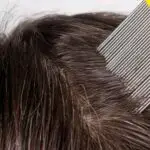How Can Head Lice Become Body Lice?
Head lice are the most common form of lice that affect children. They are spread by head-to-head contact or by sharing clothing and other items worn on the head. Although they are less dangerous than body lice, they are very contagious and can easily spread from one person to another. As a result, it’s important to avoid any contact with an infected person and wash clothing and personal items often.
Adult body lice are about 2.3-4.0 mm long and have six legs. They’re grayish-white or tan in color and feed on human blood. They typically live on clothing and bedding, but they can also be found on the body. Lice need human blood to survive and die after five to seven days.
Lice infestations can be difficult to treat, but proper care can help to prevent the spread of lice. Itching is the most common symptom, which occurs as a result of a reaction to the bites of lice. If left untreated, this can cause sores on the scalp. If these sores grow into a crust, they can be painful and infected.
After the eggs hatch, the lice larvae begin feeding on the host. Lice lay their eggs on clothing that comes into contact with the host’s skin. Females can lay 50 to 150 eggs in their lifetime. However, some can lay as many as 275-300 eggs. Eggs develop in the same way as head lice do, and the time they need to mature depends on the temperature and proximity to the host’s body. Lice eggs can be incubated for five days or more, but will only hatch if temperatures remain between 23degC and 38degC.







